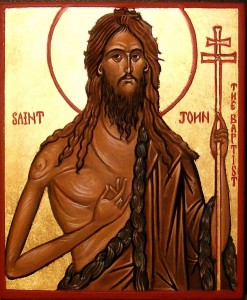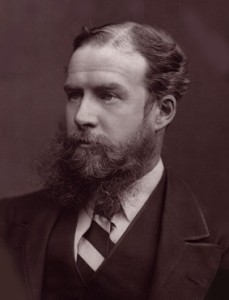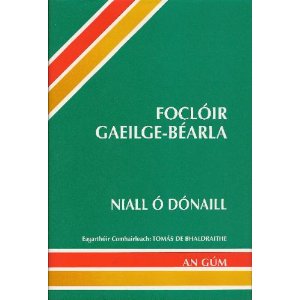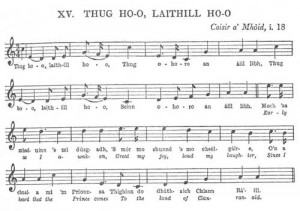There is a lot happening at St. Paul’s Parish this morning – it would seem to be a lot more than one might expect to find going on in a church on a summer Sunday! If this is your first visit to our parish and you are not one of the members of Medina Lodge #58, Free & Accepted Masons of Ohio, who are our guests today, you may be wondering what sort of church this is, what is all this activity! Well, let me tell you ….
First – it is the last Sunday of the month and that means that, in addition to our regular weekly offerings, we take up a collection called “the 2-cent-a-meal offering” to fund hunger relief work in this parish and throughout the Episcopal Diocese of Ohio. Nick Magee, who oversees our Free Farmers Market food pantry ministry, sent me an email yesterday with the half-year statistics on that ministry. His spreadsheet showed that yesterday 221 people were provided with food by this parish, which just happens to be the average number of clients served each week the Free Farmers Market is open. In the first half of 2011, our food pantry has provided a week’s worth of groceries to 2,646 persons; nearly twenty thousand pounds of food have been distributed. A word of congratulations to Nick and the Free Farmers Market volunteers – the food pantry was recognized by the Akron Community Foundation last month which awarded it a grant of $4,000! It continues to be a vital and necessary ministry in our community and I encourage you to be as generous as the Akron foundation.
Second – also because it is the last Sunday of the month, this is the Sunday on which we offer prayers for healing and when we bless the work of our knitting circles. For those who are ill or injured, we offer unction and the laying on of hands here at the communion rail following the distribution of Holy Communion. You can also come forward to receive unction and prayer on behalf of someone else, someone unable to be here. The knitted items are, for the most part, prayer shawls made for the comfort of those recovering from illness or injury, warm garments (hats, scarves, and gloves) for merchant marine seamen served by the Episcopal Church’s Seamen’s Institute, and baby blankets for the newborn (many of which we now have or are soon expecting in this parish, by the way. Congratulations again to Nick Magee and to his wife Sian who this week welcomed Finn Griffiths Magee into the world and into their family.)
Third – this past week marked the 20th Anniversary of my ordination into the priesthood and my wife Evelyn and our Senior Warden Barbara Baird cooked up a scheme to have a reception acknowledging that milestone during our usual “coffee hour” after this service. Ladies, I’m very grateful to you for doing so. As I said in a post on Facebook on Tuesday, the actual anniversary, I am extremely grateful and humbled by the gift and privilege of priesthood which permits those of us in this office to share with each of you and all of you the milestones of your lives, to celebrate with you in times of joy and to grieve with you in times of misfortune and sorrow, to preside at our faith’s most significant acts of worship, and to participate in all the small but meaningful ways we form community. My wife secretly arranged for our children, Caitlin and Patrick, to be here for this reception, and Patrick (who was recently ordained a deacon and in a few months will himself be ordained a priest) is serving at the altar with me today – our first time to do so together.
Fourth – later this week … to be precise in four days, seven hours, and fifteen minutes (but who’s counting?) … I will be flying to Scotland to begin three months of sabbatical studying Celtic Christianity, learning more of the Irish Gaelic language, visiting ancient British, Scottish and Irish ruins, and translating and arranging some ancient Irish hymns. So the anniversary reception is also something of a going away party. Please join us in the Parish Hall after this service for the party!
 Finally – as we have done for the past few years, St. Paul’s Parish is hosting our friends from the local Masonic Lodge whom I mentioned earlier and whose custom it is to worship together on the Sunday closest to the feast of the Nativity of St. John the Baptist. Thus, we are using the lessons assigned to that feast not those of the usual Sunday lectionary, and singing songs which might seem to some more fitting for the season of Advent than for the middle of summer. The members of the Lodge do so because modern American Freemasonry regards both St. John the Evangelist and St. John the Baptist referring to them jointly as “the Holy Saints John of Jerusalem.”
Finally – as we have done for the past few years, St. Paul’s Parish is hosting our friends from the local Masonic Lodge whom I mentioned earlier and whose custom it is to worship together on the Sunday closest to the feast of the Nativity of St. John the Baptist. Thus, we are using the lessons assigned to that feast not those of the usual Sunday lectionary, and singing songs which might seem to some more fitting for the season of Advent than for the middle of summer. The members of the Lodge do so because modern American Freemasonry regards both St. John the Evangelist and St. John the Baptist referring to them jointly as “the Holy Saints John of Jerusalem.”
Why, you may ask, would Masons, who insist that our fraternity is not a religious institution, thus venerate these saints? Why would Masons gather together in worship on this particular Sunday?
As every Mason knows, one of the symbols found in a lodge room is a certain point within a circle, bounded by two parallel lines, with the volume of sacred law displayed atop the circle. Christopher L. Hodapp, the author of the book Freemasons For Dummies, has suggested that this is one of the least understood Masonic emblems. On his internet blog, he writes:
The symbol is actually based on an old astrological and alchemical symbol. The point in the center represented the Earth, which was thought to be the center of the universe. The heavens were believed to spin around the Earth, represented by the circle. The two lines represented the summer and winter solstices, the longest and shortest days of the year. For thousands of years, these days were celebrated as pagan feast days all over the world, and they were especially important to farming societies, because they were the astronomical methods of determining planting seasons.
In about 300A.D., the [Christian] Church began to dedicate popular pagan feast days to the saints. June 24th, the longest day of the year, was declared St. John the Baptist day, while December 27th, the shortest day, was dedicated to St. John the Evangelist. Collectively, Masons refer to them as the Holy Saints John.
Operative Freemasonry was first developed when Roman Catholicism was the prevailing religion, and these feast days continued under the Church of England. It was common for guilds and other trade groups to adopt a patron saint or two. Some Masons picked both Saints John, and over the centuries Masons commonly celebrate their feast days with banquets. And curiously, even though Freemasonry today is non-denominational and non-sectarian, American Masons have retained these customs of old. ….
John the Baptist was zealous, while John the Evangelist was learned, and by picking both of them as patron saints, Masons symbolically united both passion and reason.
The symbol also shows the Volume of Sacred Law at the top. In Masonry, the point represents the individual, and the circle is the boundary of his actions. Taken as a whole, the symbol implies that a Mason should consult the sacred texts of his own religion to achieve the proper balance between passion and intensity on one side, and knowledge and education on the other. In other words, he should balance education, excitement and faith to effectively subdue his passions. In a way, it is a graphic representation of the conscience.
Zeal and learning, passion and reason, excitement and education … the effective blending of these supposed opposites into effective action and ministry … this is what is going on here at St. Paul’s Parish today.
It is all well and good to be zealous and passionate about the need to feed people, but to get it done people like Nick and the other Free Farmers’ Market leaders have to do the reasonable work, really the hard work of figuring out what’s needed, ordering it, stocking it, and organizing volunteers to actually get it done. The proper balance between passion and intensity on one side, and knowledge and education on the other, effectively accomplishes the mission of the church – people are fed.
It is all well and good to love to knit and want share what one makes with the excitement and intensity that our knitting circles display, but without someone to take on the job of learning where the shawls, the gloves and scarves, and the baby blankets are needed, and how to get them there, all that excitement and intensity goes nowhere. The proper balance between passion on one side, and knowledge and education on the other, effectively accomplishes the mission of the church – the ill are comforted and lonely seamen are kept warm.
Today, in commemorating St. John the Baptist, we honor the zealous, passionate, excited side of this equation; we honor the forerunners, the visionaries, the pioneers, the people who “dream dreams and see visions,” those who go to the mountain-top and cry out “Behold!”
It has been said of visionaries that what they do is make the untrue become true. Author Ken Zaretsky puts it this way:
If you say something you know isn’t true and just leave it at that, then you are a liar.
If you believe that untruth, then you are delusional.
On the other hand, if you say something you know isn’t true; then not only believe it but also make it true, you are a visionary! Visionaries are deserving of praise and accolades from friends, peers and the public.
There are fine lines between liars, delusional individuals and visionaries. After all, what is the difference between making something up and making something up?
The first difference is intent. A liar conjures an image. He or she might see it. He might get others to believe in it. But he doesn’t believe it himself. The liar has no intention to make anything happen.
Like the liar, the delusional person also has an image. He or she can see it and, unlike the liar, believe it. It’s possible that she can also get others to believe in it. But she doesn’t do anything beyond believing because, to the delusional person, the image already exists in reality.
A visionary has an image of the ideal. The visionary sees the image, believes it and gets other people to believe in it. Then the visionary works to make the image come to life.
Visionaries see and proclaim an inspired and inspiring positive picture of the future, with a clear sense of direction as to how to get there. They keep communicating the vision to create an energy that sometimes they, but more often others, use to bring their vision into physical reality. Nelson Mandela, for example, clearly held a positive vision of a racially harmonious South Africa during his 28 years in jail and helped bring it into reality peacefully – to the amazement of the world.
Visionaries inspire use to be better than we are and help us identify with what Lincoln called “the better angels of our nature.” This was the power of Martin Luther King’s “I have a dream” speech.
Visionaries often have the ability to see higher spiritual forces at work behind the scenes of events, and they align with the vision of these redemptive forces. Both George Washington and Winston Churchill spoke about the help they received from a “guiding hand.” Churchill said, “…we have a guardian because we serve a great cause, and we shall have that guardian as long as we serve that cause faithfully.”
Vision, it has been said, is an energy field that brings new realities into form. Visionaries tap into and transmit that energy to people, giving us a new sense of hope and confidence, helping us to believe in ourselves and work to create a better world.
More than twenty years ago I had a vision of the priesthood, a sense of call to the ministry of hope and confidence, to the work of creating a better world, to the gift of sharing with God’s people their times of joy and their times of misfortune and sorrow, to the privilege of presiding at our faith’s most significant acts of worship, and to the simple good fun of participating in all the small but meaningful ways the church forms community. I am very grateful for every minute of the twenty years that I have lived out that vision in this and other parishes, but let me be honest and tell you that after twenty years of managing tight budgets, chairing vestry meetings, rehearsing and solemnizing weddings, baptizing babies, leading bible studies, sitting beside hospital beds, and burying the dead … it’s time for a break. So I am also especially grateful for the opportunity to take these next several weeks of time away from the church.
I do so confident that this church will do just fine without me, that things will be (as I am wont to say) “Just peachy!” I know that they will be because our vestry, our lay leadership is a bunch of visionaries. They dream dreams and see visions and generate the energy make them come true. They are neither liars nor delusional, what they purpose they accomplish. They have dreamed a dream and seen a vision of a growing St. Paul’s Parish with and expanded and improved building, and they are going to see it accomplished. They have a clear sense of direction as to how to get there and over these coming weeks they will communicate that vision in way that I am sure will create the energy that they and you will use to bring that vision into reality.
Today, in commemorating St. John the Baptist, we honor the zealous, passionate, and excited leadership of the church; we honor the forerunners, the visionaries, the pioneers, the people who “dream dreams and see visions,” those who go to the mountain-top and cry out “Behold!”
The Vestry has begun closing its meetings with a prayer for vision attributed to Sir Francis Drake, the explorer who claimed North America on behalf of Queen Elizabeth the First and whose ship’s chaplain offered the first Christian worship on North American soil. I’m going to close my sermon today with that same prayer.
Let us pray:
Disturb us, Lord, when we are too well pleased with ourselves, when our dreams have come true because we have dreamed too little, when we arrived safely because we sailed too close to the shore. Disturb us, Lord, when with the abundance of things we possess we have lost our thirst for the waters of life; having fallen in love with life, we have ceased to dream of eternity and in our efforts to build a new earth, we have allowed our vision of the new Heaven to dim. Disturb us, Lord, to dare more boldly, to venture on wider seas where storms will show your mastery; where losing sight of land, we shall find the stars. We ask you to push back the horizons of our hopes, to push us into the future in strength, courage, hope, and love. Amen.
(This sermon is also posted at The Theology Diner)
 Driving on the left side of the road is something that pretty much comes back to you quickly after having done it before. Scottish roads are nearly identical to the Irish, though their country lanes are wider. I made a fool of myself getting into a place in the rental yard where I had to back up and couldn’t figure out for several minutes how to get the darned thing into reverse, but eventually figured that out.
Driving on the left side of the road is something that pretty much comes back to you quickly after having done it before. Scottish roads are nearly identical to the Irish, though their country lanes are wider. I made a fool of myself getting into a place in the rental yard where I had to back up and couldn’t figure out for several minutes how to get the darned thing into reverse, but eventually figured that out.  I had no idea who John Lubbock was, although I now know that I certainly should have. He was a Victoria era banker with many side interests, and the First Baron Avebury. He also was a good friend of Charles Darwin, whose hometown of Shrewsbury, Shropshire, I will be visiting in just under two weeks.
I had no idea who John Lubbock was, although I now know that I certainly should have. He was a Victoria era banker with many side interests, and the First Baron Avebury. He also was a good friend of Charles Darwin, whose hometown of Shrewsbury, Shropshire, I will be visiting in just under two weeks.  Misused apostrophes added unnecessarily to plurals or added (or forgotten) with possessives … to use a serial comma or not … should this be a colon or semicolon … does a comma or period go inside the quotation marks or outside?
Misused apostrophes added unnecessarily to plurals or added (or forgotten) with possessives … to use a serial comma or not … should this be a colon or semicolon … does a comma or period go inside the quotation marks or outside? Last evening as I walked the dog after sunset, the sky still a fairly bright blue with plenty of light to see, I looked into the darkness of the woods behind our house and saw that the fireflies were beginning to flash their mating signals. I realized that I’m leaving Ohio at one of my favorite times of the year – firefly time! I love fireflies!
Last evening as I walked the dog after sunset, the sky still a fairly bright blue with plenty of light to see, I looked into the darkness of the woods behind our house and saw that the fireflies were beginning to flash their mating signals. I realized that I’m leaving Ohio at one of my favorite times of the year – firefly time! I love fireflies! Finally – as we have done for the past few years, St. Paul’s Parish is hosting our friends from the local Masonic Lodge whom I mentioned earlier and whose custom it is to worship together on the Sunday closest to the feast of the Nativity of St. John the Baptist. Thus, we are using the lessons assigned to that feast not those of the usual Sunday lectionary, and singing songs which might seem to some more fitting for the season of Advent than for the middle of summer. The members of the Lodge do so because modern American Freemasonry regards both St. John the Evangelist and St. John the Baptist referring to them jointly as “the Holy Saints John of Jerusalem.”
Finally – as we have done for the past few years, St. Paul’s Parish is hosting our friends from the local Masonic Lodge whom I mentioned earlier and whose custom it is to worship together on the Sunday closest to the feast of the Nativity of St. John the Baptist. Thus, we are using the lessons assigned to that feast not those of the usual Sunday lectionary, and singing songs which might seem to some more fitting for the season of Advent than for the middle of summer. The members of the Lodge do so because modern American Freemasonry regards both St. John the Evangelist and St. John the Baptist referring to them jointly as “the Holy Saints John of Jerusalem.”



